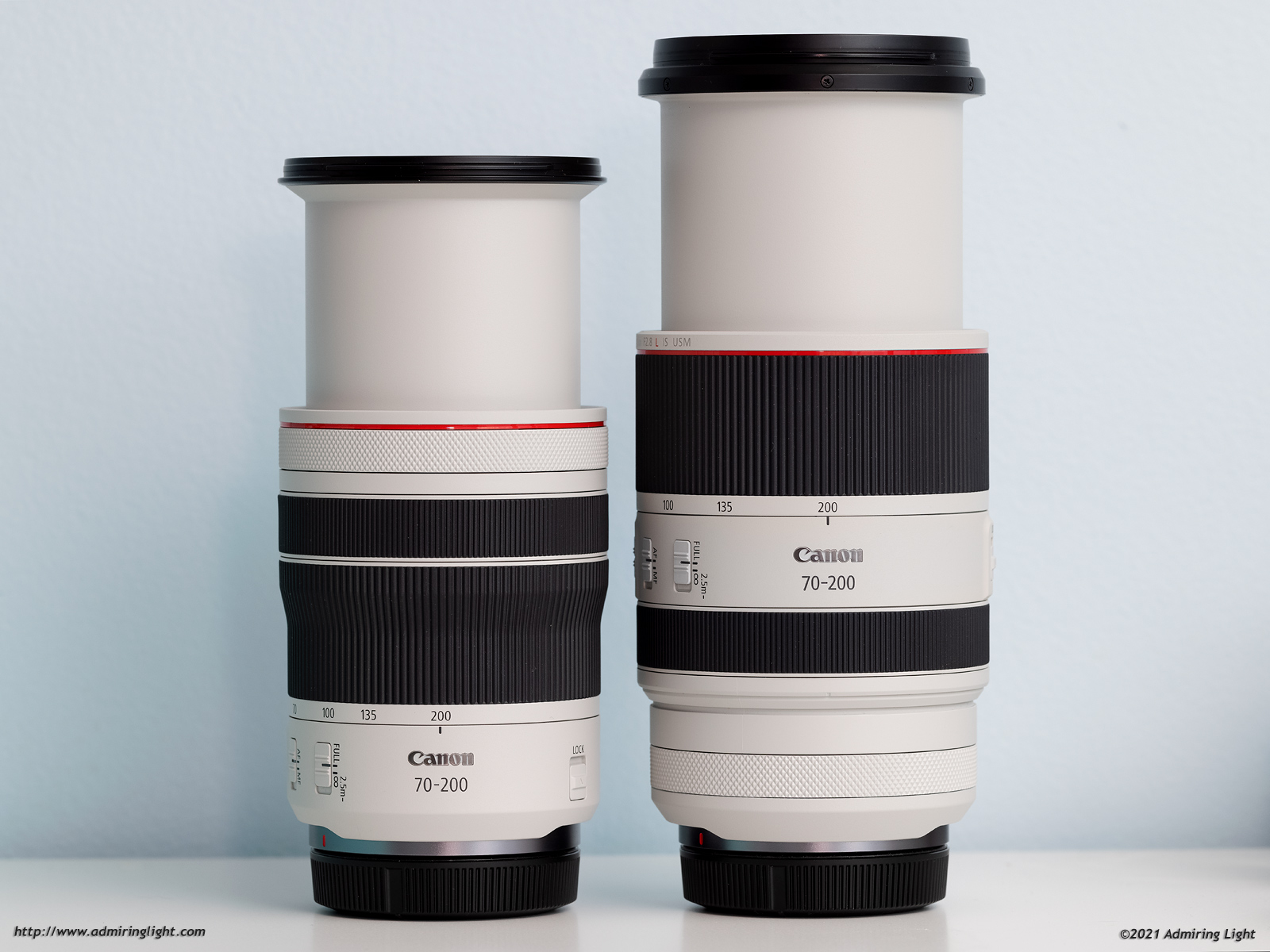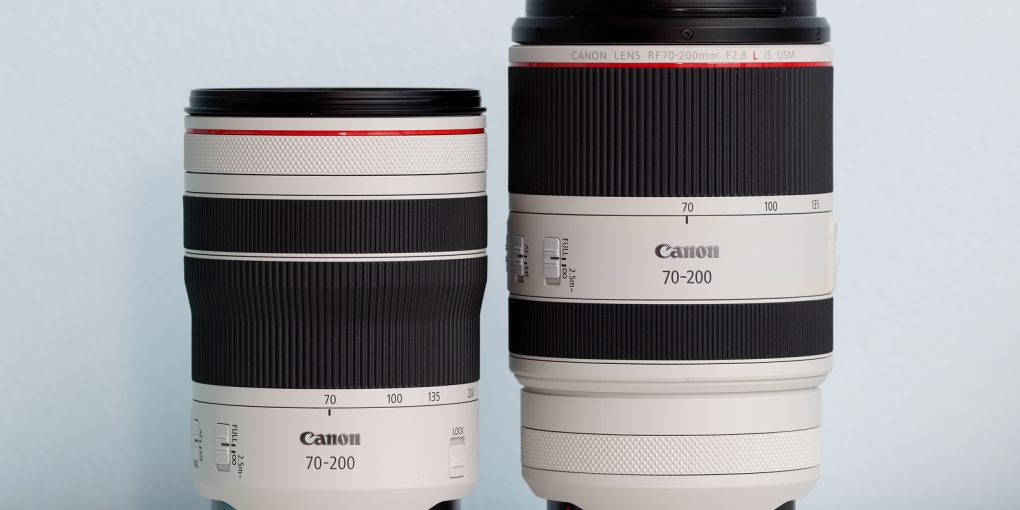Rf 70-200 F4 Vs 2.8 : Choosing the Perfect Lens
The Canon RF 70-200mm F4 and 2.8 lenses are compared based on their specifications and performance, helping users choose the best option for their needs. The RF 70-200 F4 lens offers a smaller size and weight, making it more portable and convenient for travel or everyday use.
On the other hand, the RF 70-200 2. 8 lens provides a wider aperture, allowing for better low-light performance and more control over depth-of-field. Both lenses have their strengths, so it ultimately depends on the individual photographer’s preferences and shooting requirements.

Credit: www.dpreview.com
Table of Contents
- Comparison: Rf 70-200 F4 Vs 2.8
- Price
- Size And Weight
- F-stop
- Background Blur Comparison
- Bokeh Comparison
- Who Are These Lenses For?
- Professional Photographers
- Enthusiasts
- Amateur Photographers
- Frequently Asked Questions On Rf 70-200 F4 Vs 2.8
- What Is The Difference Between F4 And F2 8?
- What Is The Sharpest F Stop On The Canon 70 200?
- What Is The Focus Distance Of The Rf 70 200 F4?
- Does Canon 70 200 F4 Have Image Stabilization?
- Conclusion
- CallofPhotography
Comparison: Rf 70-200 F4 Vs 2.8
Are you in the market for a new telephoto lens and wondering which one to choose between the Rf 70-200 F4 and the Rf 70-200 2.8? In this detailed comparison, we’ll discuss the key differences between these two lenses to help you make an informed decision. From the price point to the background blur, we’ll cover it all. Let’s dive in.
Price
The price is often one of the primary factors influencing purchasing decisions. If you are on a budget, the Rf 70-200 F4 is the more affordable choice, with a price tag that won’t break the bank. On the other hand, if you’re willing to invest more in superior optics and faster performance, the Rf 70-200 2.8 comes at a higher cost. Ultimately, it depends on your budget and specific needs.
Size And Weight
When it comes to size and weight, the distinction between these lenses is noticeable. The Rf 70-200 F4 is relatively compact and lightweight, making it a convenient option for photographers on the go. In contrast, the Rf 70-200 2.8 is bulkier and heavier, but it offers a wider maximum aperture. If portability is a priority for you, the F4 version might be the better fit.
F-stop
The F-stop, or aperture, determines the amount of light that enters the lens and affects depth of field and low-light performance. The Rf 70-200 F4 has a fixed maximum aperture of f/4, which is still decent for most shooting conditions. However, if you frequently shoot in low-light environments or desire more creative depth of field control, the wider maximum aperture of f/2.8 on the Rf 70-200 2.8 could be a game-changer for you.
Background Blur Comparison
The background blur, or bokeh, is an essential element of portrait and wildlife photography. While both lenses produce quality bokeh, the wider aperture of the Rf 70-200 2.8 allows for smoother and more pronounced background blur. If you’re looking to achieve that professional-looking, creamy bokeh effect, the 2.8 version will provide better results.
Bokeh Comparison
Building on the previous point, the bokeh quality is an important consideration for many photographers. Both lenses are capable of producing pleasing bokeh, but the Rf 70-200 2.8 takes it up a notch. With a wider aperture, it offers greater control over depth of field and produces stunning, dreamy bokeh that will make your subjects pop against the background.

Credit: www.reddit.com
Who Are These Lenses For?
Who are these lenses for? The Rf 70-200 F4 and 2. 8 lenses are designed for photographers who want versatile and high-quality zoom capabilities. Whether you prioritize portability or need maximum aperture, there’s an option for you.
Professional Photographers
When it comes to professional photographers, both the RF 70-200 f/4 and the RF 70-200 f/2.8 lenses are excellent choices. The f/2.8 lens is typically preferred by professionals who require maximum low-light performance and want the ability to achieve a shallow depth of field. With its larger aperture, this lens allows photographers to capture crisp, sharp images even in challenging lighting conditions. On the other hand, the f/4 lens is a great option for professionals who prioritize portability and versatility. It is significantly lighter and smaller than the f/2.8 lens, making it more suitable for photographers on the go who need to travel light. Despite its smaller aperture, the f/4 lens delivers exceptional image quality and is more budget-friendly compared to its f/2.8 counterpart.Enthusiasts
Enthusiast photographers who are passionate about photography and want to take their skills to the next level will find both the RF 70-200 f/4 and the RF 70-200 f/2.8 lenses to be fantastic options. For those who are keen on capturing stunning bokeh and achieving a shallow depth of field, the f/2.8 lens is ideal. Its larger maximum aperture allows for more creative control over the background blur and enables impressive subject isolation. Additionally, the f/2.8 lens excels in low-light situations, providing enthusiasts with sharper images even in challenging lighting conditions. Enthusiasts who prioritize convenience and portability might lean towards the f/4 lens. It is significantly smaller and lighter than the f/2.8 lens, making it easier to carry around and shoot in a variety of scenarios. While it may not offer the same low-light performance or extreme background blur as the f/2.8 lens, the f/4 lens still delivers exceptional image quality and is a more affordable option.Amateur Photographers
Amateur photographers who are just starting their photography journey or simply enjoy capturing moments as a hobby can benefit from both the RF 70-200 f/4 and the RF 70-200 f/2.8 lenses. The f/2.8 lens provides amateurs with the opportunity to experiment with creating professional-looking images. Its larger maximum aperture allows for better performance in low-light settings and the ability to capture beautiful bokeh, giving amateur photographers the chance to explore the creative aspects of photography. For those who are looking for a more affordable option without compromising on image quality, the f/4 lens is a great choice. It still delivers impressive results and offers the convenience of a smaller and lighter lens, making it easier for amateurs to carry around and capture their favorite moments. In conclusion, both the RF 70-200 f/4 and RF 70-200 f/2.8 lenses have their own merits, catering to different needs and preferences. Whether you are a professional, enthusiast, or amateur photographer, these lenses provide excellent quality and versatility for capturing stunning images in a variety of situations.
Credit: admiringlight.com
Frequently Asked Questions On Rf 70-200 F4 Vs 2.8
What Is The Difference Between F4 And F2 8?
The main difference between F4 and F2. 8 is the maximum aperture. F2. 8 offers a wider aperture, allowing for better low light performance and more control over depth of field. F4, on the other hand, is more affordable and lighter in weight.
What Is The Sharpest F Stop On The Canon 70 200?
The sharpest F stop on the Canon 70 200 is f/2. 8. This aperture setting provides crisp and clear images for optimal sharpness.
What Is The Focus Distance Of The Rf 70 200 F4?
The focus distance of the RF 70-200 F4 is 0. 6m.
Does Canon 70 200 F4 Have Image Stabilization?
Yes, the Canon 70-200 F4 lens does have image stabilization.
Conclusion
When it comes to choosing between the RF 70-200 F4 and 2. 8 lenses, both have their own strengths and weaknesses. The F4 lens offers a more compact and lightweight option, while the 2. 8 lens provides a wider aperture for better low-light performance.
Ultimately, the choice depends on your specific needs and preferences. Whether you prioritize portability or low-light capabilities, both lenses will deliver exceptional image quality and versatility. So, take your time to evaluate your requirements and make a decision that suits your shooting style and budget.
I am a photography enthusiast turned blogger, sharing my passion and expertise on this blog, "CallofPhotography." Growing up surrounded by nature, I developed a love for capturing moments through my lens. After studying Fine Arts with a focus on photography, I launched my blog to share tutorials, gear reviews, and my own photographic work. Through engaging storytelling, I invites readers to join her visual journey, inspiring and empowering photographers of all levels worldwide.


